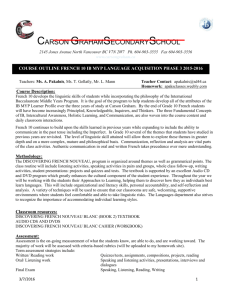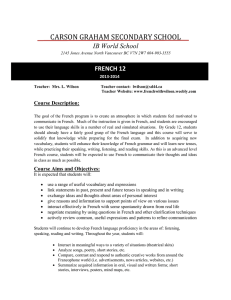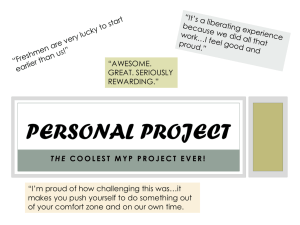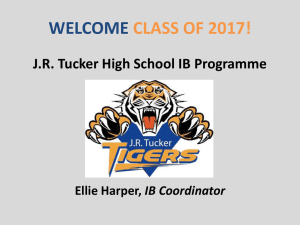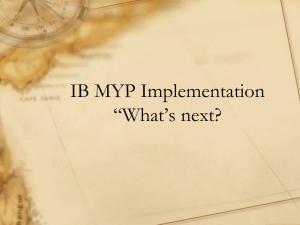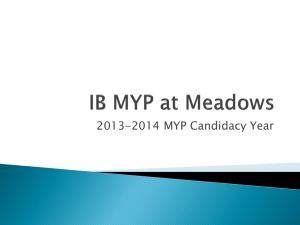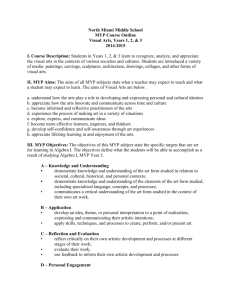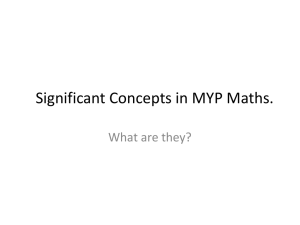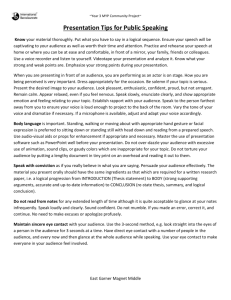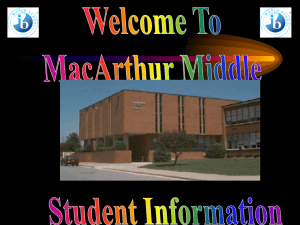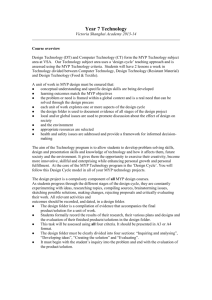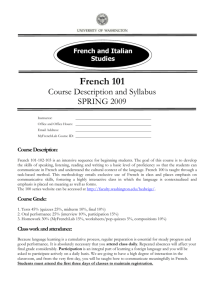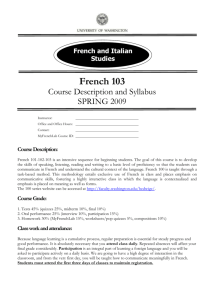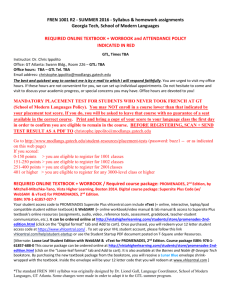Accents/Symbols on the computer
advertisement
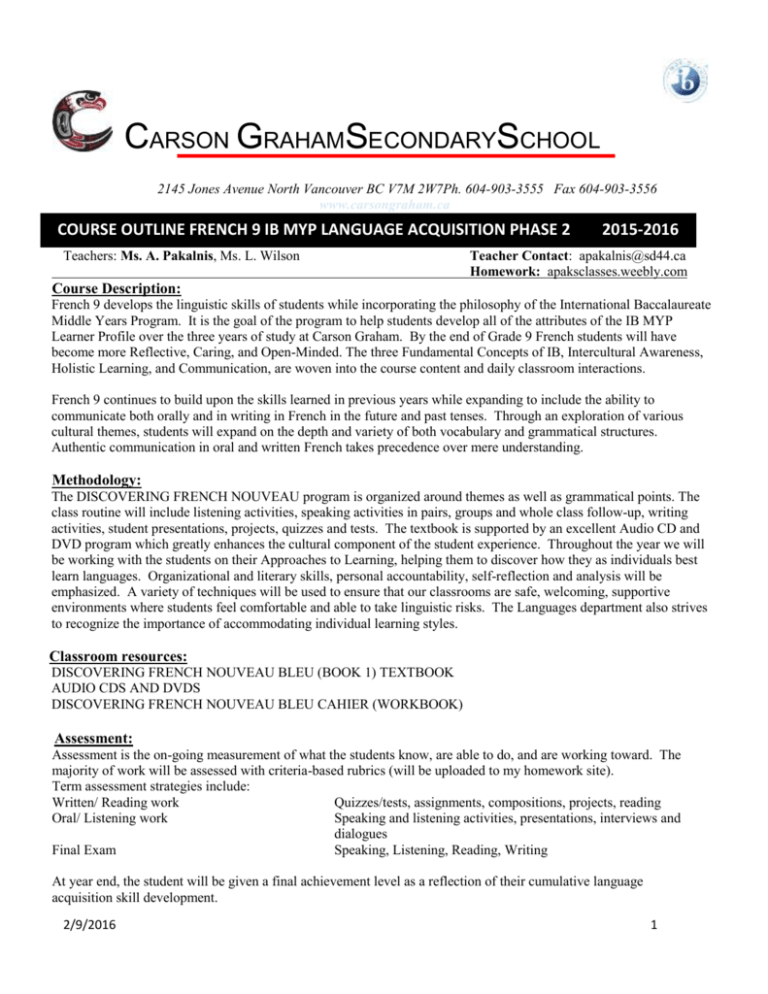
CARSON GRAHAMSECONDARYSCHOOL 2145 Jones Avenue North Vancouver BC V7M 2W7Ph. 604-903-3555 Fax 604-903-3556 www.carsongraham.ca COURSE OUTLINE FRENCH 9 IB MYP LANGUAGE ACQUISITION PHASE 2 Teachers: Ms. A. Pakalnis, Ms. L. Wilson 2015-2016 Teacher Contact: apakalnis@sd44.ca Homework: apaksclasses.weebly.com Course Description: French 9 develops the linguistic skills of students while incorporating the philosophy of the International Baccalaureate Middle Years Program. It is the goal of the program to help students develop all of the attributes of the IB MYP Learner Profile over the three years of study at Carson Graham. By the end of Grade 9 French students will have become more Reflective, Caring, and Open-Minded. The three Fundamental Concepts of IB, Intercultural Awareness, Holistic Learning, and Communication, are woven into the course content and daily classroom interactions. French 9 continues to build upon the skills learned in previous years while expanding to include the ability to communicate both orally and in writing in French in the future and past tenses. Through an exploration of various cultural themes, students will expand on the depth and variety of both vocabulary and grammatical structures. Authentic communication in oral and written French takes precedence over mere understanding. Methodology: The DISCOVERING FRENCH NOUVEAU program is organized around themes as well as grammatical points. The class routine will include listening activities, speaking activities in pairs, groups and whole class follow-up, writing activities, student presentations, projects, quizzes and tests. The textbook is supported by an excellent Audio CD and DVD program which greatly enhances the cultural component of the student experience. Throughout the year we will be working with the students on their Approaches to Learning, helping them to discover how they as individuals best learn languages. Organizational and literary skills, personal accountability, self-reflection and analysis will be emphasized. A variety of techniques will be used to ensure that our classrooms are safe, welcoming, supportive environments where students feel comfortable and able to take linguistic risks. The Languages department also strives to recognize the importance of accommodating individual learning styles. Classroom resources: DISCOVERING FRENCH NOUVEAU BLEU (BOOK 1) TEXTBOOK AUDIO CDS AND DVDS DISCOVERING FRENCH NOUVEAU BLEU CAHIER (WORKBOOK) Assessment: Assessment is the on-going measurement of what the students know, are able to do, and are working toward. The majority of work will be assessed with criteria-based rubrics (will be uploaded to my homework site). Term assessment strategies include: Written/ Reading work Quizzes/tests, assignments, compositions, projects, reading Oral/ Listening work Speaking and listening activities, presentations, interviews and dialogues Final Exam Speaking, Listening, Reading, Writing At year end, the student will be given a final achievement level as a reflection of their cumulative language acquisition skill development. 2/9/2016 1 I. IB MYP LANGUAGE ACQUISITION PHASE 2 OBJECTIVES A Comprehending spoken and visual text At the end of phase 2, the student should be able to: show understanding of messages, main ideas and supporting details have awareness of basic conventions engage with the spoken and visual text by identifying ideas, opinions and attitudes and by making a personal response to the text show understanding of the content, context and concepts of the text as a whole. B Comprehending written and visual text At the end of phase 2, the student should be able to: identify basic facts, main ideas and supporting details, and draw conclusions recognize basic conventions including aspects of format and style, and author’s purpose for writing engage with the written and visual text by identifying ideas, opinions and attitudes and by making a personal response to the text show understanding of the content, context and concepts of the text as a whole. C Communicating in response to spoken, written and visual text At the end of phase 2, the student should be able to: respond to phrases and basic information in spoken, written and visual text interact in structured exchanges use phrases to communicate ideas, feelings and information in familiar situations; ideas are relevant communicate with a sense of audience. D Using language in spoken and written form At the end of phase 2, the student should be able to: write/speak using a range of vocabulary, grammatical structures and conventions use pronunciation and intonation with some errors, though these do not interfere with comprehensibility organize information and ideas use language to suit the context. II. PROVINCIAL STANDARDS According to the BC Ministry of Education at the end of French 9, the student should be able to: Use a growing variety of strategies to construct meaning Seek clarification and provide verification of meaning through a variety of strategies Construct meaning from a variety of simple texts Narrate a story orally or in writing Participate in short and simple conversations Express themselves using complete sentences in past, present and future timeframes orally and in writing: Ask and respond to questions on familiar topics Exchange information on topics of interest Describe a series of events Express simple needs in familiar situations Express and justify opinions on familiar topics Describe elements of Francophone culture in various regions Describe similarities and differences between the cultural practices and traditions of their own family and community and those of various Francophone cultural communities Identify examples of how Francophone culture is expressed through creative works Initiate a variety of connections with Francophone communities 2/9/2016 2 Unité 1 En Ville (Downtown) Unit Question: Comment est ta communauté idéale? (What is your ideal community?) DFN Unit 5 Content: The house; city locations; neighbourhood; directions; events; transportation; sports, games and instruments; family; ordinal numbers; aller & venir; au/à la/ aux; chez; future; emphatic pronouns; possession; jouer à/de. IB MYP Areas of Interaction: Approaches to Learning: Reflection Environments Students identify the qualities that make up a positive community. Learner Profile Attribute: Communicators Unité 2 Le Shopping (Buying Clothes) Unit Question: Qu’est-ce que ton apparence dit de ta personnalité et de tes valeurs? (What does your appearance say about your personality and values?) DFN Unit 6 Content: Adjectives, regular RE verbs, IR verbs, mettre, verbs like payer, acheter, & préférer; the pronoun “on”; “ce” & “quel”; comparison; the imperative; expressions « avoir besoin de & avoir envie de ”; numbers 1-1000 IB MYP Areas of Interaction: Approaches to Learning: Thinking Community and Service Project on clothing and the meaning behind appearance Clothing and toiletries drive Learner Profile Attribute: Caring Unité 3 Le Temps Libre (Leisure Time Activities) Unit Question: Quelles activités as-tu choisies récemment pour la santé et l’engagement social? (Which leisure activities have you chosen lately to foster health and social relationships) DFN Unit 7 Content:Weekend/ summer / winter activities; household chores; means of transport; time words ; expression “faire de” with sports/activities ; expressions with avoir ; “ne … jamais” ; the verb “voir” ; “quelqu’un & quelque chose & their opposites ; Passé Composé IB MYP Areas of Interaction: Approaches to Learning: Transfer Health and Social Education Examine the role of fitness and activity in our culture compared to those of the francophone world Learner Profile Attribute: Inquirers Unité 4 Les Repas (Food and Beverages) Unit Question: Quels sont les différences et les similarités entre les cultures. (What are the differences and similarities between cultures?) DFN Unit 8 Content:Names of food and beverages ; place settings in French : verbs of preference like “vouloir & pouvoir” ; quantities ; partitive articles “du / de la / des” ; object pronouns “me/ te/ nous / vous / le / la / les/ lui /leur” ; verbs “dire, écrire, prendre, boire, connaître” IB MYP Areas of Interaction: Approaches to Learning: Communication/ Collaboration Human Ingenuity Project: Francophone cultures around the world – how do they compare to Canada? Learner Profile Attribute: Open Minded 2/9/2016 3 Madame Anna Pakalnis Class Expectations: Email: apakalnis@sd44.ca Homework: apaksclasses.weebly.com Students are expected to: bring these materials to each class : 2" three-ring binder, loose-leaf paper (lined), unlined paper (5-6 sheets), 6 or more dividers, 2 pens (blue or black and red), highlighter, pencil, ruler, protective covering for borrowed materials from school (textbook and possibly workbook), and an agenda book. *Purchase of a French/English Dictionary is optional (recommend Collins-Robert or Harraps). arrive to class on time, ready and willing to learn. make a consistent effort to always speak French in class, use class time efficiently, and complete homework. My homework is posted in the classroom and also on my homework site (follow “Staff Info” link @ www.carsongraham.ca). I will also update this site with helpful links and PDF files. complete assignments on time. respect the cleanliness of the classroom and only drink water and eat small snacks, if needed. seek help when necessary. Email me at: apakalnis@sd44.ca or see me after class to set up an appointment. I am usually available for extra help in the mornings and by appointment at other times. take the initiative to inform yourself and catch up on missed work during an excused absence and PROMPTLY make up assignments, quizzes and tests. You must inform me of an upcoming absence (sports event, field trip, vacation etc…) and you accept responsibility to complete the work. respect the ideas and work of others by listening attentively and participating actively and appropriately during whole class activities. be an active and respectful participant during group sessions, contribute ideas and work, and are helpful to other members of the group. You do YOUR share! Concerns: 1. If cell phones, etc. are brought to class and distract from the learning process, they will be confiscated and returned at a later time. The classroom is a working environment where you are encouraged to maximize your learning. Therefore, electronic devices must be maintained in the OFF/SILENT position (unless I ask you specifically to use them). 2. Academic Integrity: Please refer to your agenda book for the policy regarding cheating and plagiarism. In addition to the policy as outlined in the student handbook, you are expected to take note of the following procedures: If a translation website or other methods of translation are used for an at-home assignment, students will be required to rewrite the assignment so that they can demonstrate their own abilities. Helpful websites: www.classzone.com/french.cfm www.leconjugueur.com www.laits.utexas.edu/fi/vp/?tense=1 http://fog.ccsf.cc.ca.us/~creitan/grammar.htm Classroom Survival Language: (After the first week of class you must say these things in French or I will answer –“Je ne comprends pas”) May I go to the washroom? : S’il vous plaît , puis-je aller aux toilettes? May I go to my locker?: S’il vous plaît, puis-je aller à mon casier pour… (mon livre etc)? May I go get a drink?: S’il vous plaît , puis-je aller à la fontaine? May I borrow…?: S’il vous plaît , puis-je emprunter… (un stylo, un crayon, un dictionnaire?) Thank-you: Merci… You’re welcome: Il n’y a pas de quoi or De rien I don’t know: Je ne sais pas. I don’t understand: Je ne comprends pas What does “formidable” mean ?: Que veut dire… “formidable”? How do you say “wonderful” in French?: Comment dit-on… “wonderful…”en français? 2/9/2016 4 Accents/Symbols on the computer: You may already have an effective method for typing accents. Here are some other suggestions: (PC/MAC) go up into the top menu and select INSERT, scroll down to SYMBOL and select the menu on SYMBOL with the accents – usually called something like “Normal Text” OR “Latin”, then choose the letter with the appropriate accent. There are also these shortcuts: PC MAC é = ctrl +’(apostrophe)+e é =opt + e + e è = ctrl + `(top left of keyboard)+ e è = opt + `(top left of keyboard) + e ë= ctrl + shift +: + e ë = opt + u + e à = ctrl + `(top left of keyboard)+ a à = opt + `(top left of keyboard) + a â = ctrl +shift+^ (above 6) + a â = opt + i + a ç = ctrl + , (comma) + c ç = opt + c € = ctrl + alt + e € = opt + shift + @ (above 2) ---------------------------- Please detach and submit to Madame Pakalnis -------------------------------- Parent contact information: Parent(s)/ Guardian: Please acknowledge receipt of the following and indicate the best ways to contact you should the need arise. ______ I have read the Course Outline on Madame Pakalnis’ Homework site (follow “Staff Info” link at www.carsongraham.ca) ______ I have read “Madame Pakalnis’ Class Expectations” document ______ I have included the best contact information ______ *(only If applicable) My child lives at two different homes and I request that both parents be contacted about any concerns Student’s Name: ____________________________ French _____ Block: ______ Parent 1/Guardian Name:__________________________ Signature:__________________________________ Email:________________________________________ Phone (daytime): _________________________ If applicable: *Parent 2 Name: _____________________________ *Phone: ________________________________ *Email: _____________________________________ 2/9/2016 5
